5 Tips To Avoid Running Injuries
It’s that time of year again where many people set New Year’s resolutions that often include losing weight or getting fit. Many try their hand at running, which is an excellent FREE exercise (well, almost free anyway) and can be a great way to improve fitness. Here is our guide to avoiding those early injuries.
Without careful planning and progression, it can lead to frustrating and nagging injuries that often deter the amateur athlete.

Don’t run before you can walk!
This old phrase rings true for many things and is very relevant for minimizing the risk of developing running injuries. The advice is to ensure that increasing load/distance is progressive but controlled (steady) and progressive. This aspect is often rushed, especially in inexperienced athletes and particularly if they have the challenge to meet ahead of them e.g. completing the London Marathon and as a result, they usually try to increase the distance too quickly. The human body is fantastic at adapting to increases in load but if this is not controlled then overload can occur, resulting in injury.
Footwear
Running is a relatively cheap sport; however inexperienced runners often fail to choose the correct trainers when starting out or in the early stages of taking up running. If you plan to run regularly or for increasing distances, then wearing trainers made for running is essential as they are designed to minimize the risk of biomechanical issues that may arise that could consequently lead to injury.
An example of this is that if you have flat feet and wear a pair of old unsupportive trainers, the foot will roll inwards when in contact with the ground and this will in turn the lower leg (shin), knee, thigh and hip inwards and can lead to pain in the ankle, at the front of the shin, knee or in the hip region. Trainers are the connection between the human body and the ground and therefore it is vital that they are ‘up to the task.’ There is a reason why running shoes can be more expensive than the ‘off the shelf’ trainer, however, you do not need to spend a fortune and do not need to use one of the most well-known makes.
There are plenty of lesser-known manufacturers out there that make shoes for running so it is worth asking your sports shop assistant to advise you. If you intend to run significant distances then you should consider buying a more supportive pair which is often more expensive and you can usually get a pair for under $100. Trainers should be changed every 300 – 500 miles because the sole and material lose their supportive nature. Dedicated running shops will be able to help you to choose the right trainer as everyone’s body is different and therefore everyone’s requirements are also very different.
Warm up and cool down
Have you ever asked yourself ‘why do all professional athletes and sportsmen/women do warm ups and cool downs?’ Well, there is a plenty of evidence to support this as they help prepare the body for exercise and also bring the metabolic processes of the body back to normal levels again after the exercise. Unfortunately, inexperienced athletes sometimes miss these very important elements of training as they may be viewed as boring or a waste of time, however, there is plenty of evidence to support their role in reducing the risk of injury.
A simple 5-minute warm up, including stretches and dynamic movements, increases the heart rate, increases the blood supply to the muscles and can make all the difference between a body fully prepared for exercise and one that is not. Cools downs, on the other hand, are designed to lower the heart rate and return the bodily functions back to normal levels to minimize the build of lactic acid in muscles and other unwanted effects as a result of cardiovascular exercise. Both warm ups and cool downs have been shown to minimize the risk of injuries both during and after exercise and should be included as part of the training schedule.
Terrain
You can run on grass, roads, running tracks or treadmills and all can be both good and bad in terms of injury risks. Grass is more shock absorbing for the body however can be slippery (especially if wet) and can therefore require more control of the knee, foot and ankle whereas at the other end of the spectrum, road running can be quicker and less slippery, but causes more shock through the joints that can cause wear and tear injuries. The other two terrains are somewhere in between and therefore all have both advantages and disadvantages when it comes to injury risk for the amateur athlete. What we would advise is that, in the early stages of taking up running, try and keep the type of terrain you run on consistent.
What we mean by this, is that running on tarmac/roads is very different to running on grass or treadmills and swapping between them can be confusing to the body and minimizing the adaptive properties of the joint and muscles. This is a common reason for developing injuries as the body hasn’t adapted to the new environment and therefore ‘reacts’ adversely. What must be mentioned is that more advanced runners are advised to change their running terrain (on occasions) to improve adaptability and target all the different balance, strength and metabolic processes of the body.
Nutrition
Finally, there is loads of evidence to support the need for a healthy and well-balanced diet to support the training athlete. It is a very simple equation – the body needs to replace all the energy (calories) that it loses after exercise in order to function normally and therefore the number of calories burned needs to be replenished.
The body also needs a plentiful supply before embarking upon exercise otherwise the muscles will not have enough energy to complete the activity and can cause cramps and be detrimental to performance in terms of time and strength. Eating both carbohydrates and protein after exercise reduces the risk of the body using muscle tissue to replace depleted energy stores and eating protein in particular, is a vital part of nutrition for exercise as it is essential for both muscle repair and synthesis (building of muscles).
Exercise has been shown to cause microtrauma (damage) to the muscles in the legs (which is, in fact, essential if the muscles are going to adapt and strengthen) however, protein is required to aid the repair process to minimize the risk of injury. It should also be pointed out that running is sometimes used as a strategy to lose weight but as part of this, it is definitely not advisable to reduce your food and fluid intake at the same time; in fact, you need to increase your food and fluid intake.
